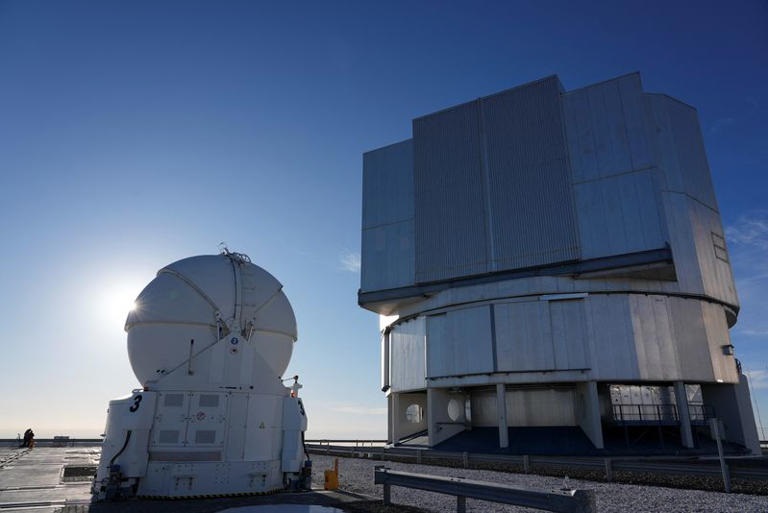- Reuters
- Yesterday

Was the emergence of intelligent life on Earth just a fluke?
-
- Reuters
- 10 Hours ago

WASHINGTON: Roughly 300,000 years ago, our species first appeared on the African landscape before spreading globally and coming to dominate the planet. All this happened about 4.5 billion years after Earth formed, with innumerable steps occurring in between that made our planet a cradle for intelligent life.
An influential scientific thesis – called the “hard steps” theory and first presented in 1983 – has held that this outcome was a long shot and that the emergence of technological-level intelligent life on Earth or elsewhere was highly improbable. But perhaps this result was not so unlikely after all, according to scientists who are now advancing an alternative theory.
Read more: What if your clothes were made from milk, carrot or seaweed?
These scientists propose that Homo sapiens and analogous extraterrestrial life forms may be the probable end result of biological and planetary evolution when a planet has a certain set of attributes that make it habitable, rather than requiring countless lucky breaks.
The path toward intelligent life, they argue, may be more of a predictable process, unfolding as global conditions allow in a manner that should not be considered unique to Earth.
“In short, our framework shows how hard steps may not actually exist – past evolutionary transitions that needed to happen for us humans to be here may not have been hard or unlikely in the available time,” said Dan Mills, a postdoctoral researcher in geomicrobiology at the University of Munich and lead author of the study published on Friday in the journal Science Advances.
Physicist Brandon Carter devised the hard steps theory. It stresses that the long road to the emergence of humankind necessitated passage through various intermediate steps, each highly unlikely.
Over the years, scientists have tried to identify some of these hard steps. These include the emergence of single-celled living organisms on primordial Earth, the initial oxygenation of the atmosphere by photosynthesis, the evolutionary transition from prokaryotic cells that lack a nucleus and other internal structures to eukaryotic cells that have them, and the appearance of complex organisms such as multicellular animals. And then, the final proposed hard step is the appearance of Homo sapiens and milestones such as language and technology.
A species with advanced technological capabilities emerged on Earth relatively late in the Earth’s habitable history, with the sun expected to increase in luminosity and boil away our planet’s oceans about a billion years from now. This has inspired the argument that Earth is an incredibly rare planet that managed to accomplish the needed hard steps before becoming rendered uninhabitable.
The new theory was devised by a team of two geobiologists and two astronomers.
They propose that humankind’s emergence followed the sequential opening of various “windows of habitability” over Earth’s history, driven by factors such as changes in nutrient availability, sea surface temperatures, ocean salinity levels and atmospheric oxygen levels. Due to these factors, Earth only relatively recently became hospitable to a species like ours, they said, and that once those conditions existed the evolutionary path was relatively rapid.
“Biological innovations proposed as hard or unlikely might actually occur quickly – geologically speaking – as soon as the environment permits,” said Penn State microbiologist Jennifer Macalady, one of the researchers.
“For example, life might have originated very quickly once temperatures were appropriate for the stability of biomolecules and liquid water. The Earth has only been habitable for humans since the second rise of oxygen in the atmosphere approximately 0.5 billion years ago, meaning that humans could not have evolved on Earth prior to that relatively recent moment,” Macalady added.
Astronomers are searching for evidence of life beyond Earth and have identified roughly 5,800 exoplanets – planets beyond our solar system. Some of them are uninhabitable gas giants akin to Jupiter but some of them are rocky worlds like our solar system’s four terrestrial planets that include Earth.
Astrophysicist and study co-author Jason Wright, director of the Penn State Extraterrestrial Intelligence Center, said that a best estimate right now is that somewhere around half of stars have a planet about the size of Earth orbiting at about the right distance to host liquid water, a key ingredient for life.
Read more: Can going vegan reverse aging? Study says yes!
“Understanding the probability of intelligent life emerging helps us understand our own place in the world,” Mills said. “Are we humans a cosmic fluke, as the hard steps model predicts? Or are we instead the more expected and typical outcome of a living planet, as our alternative framework suggests?”





